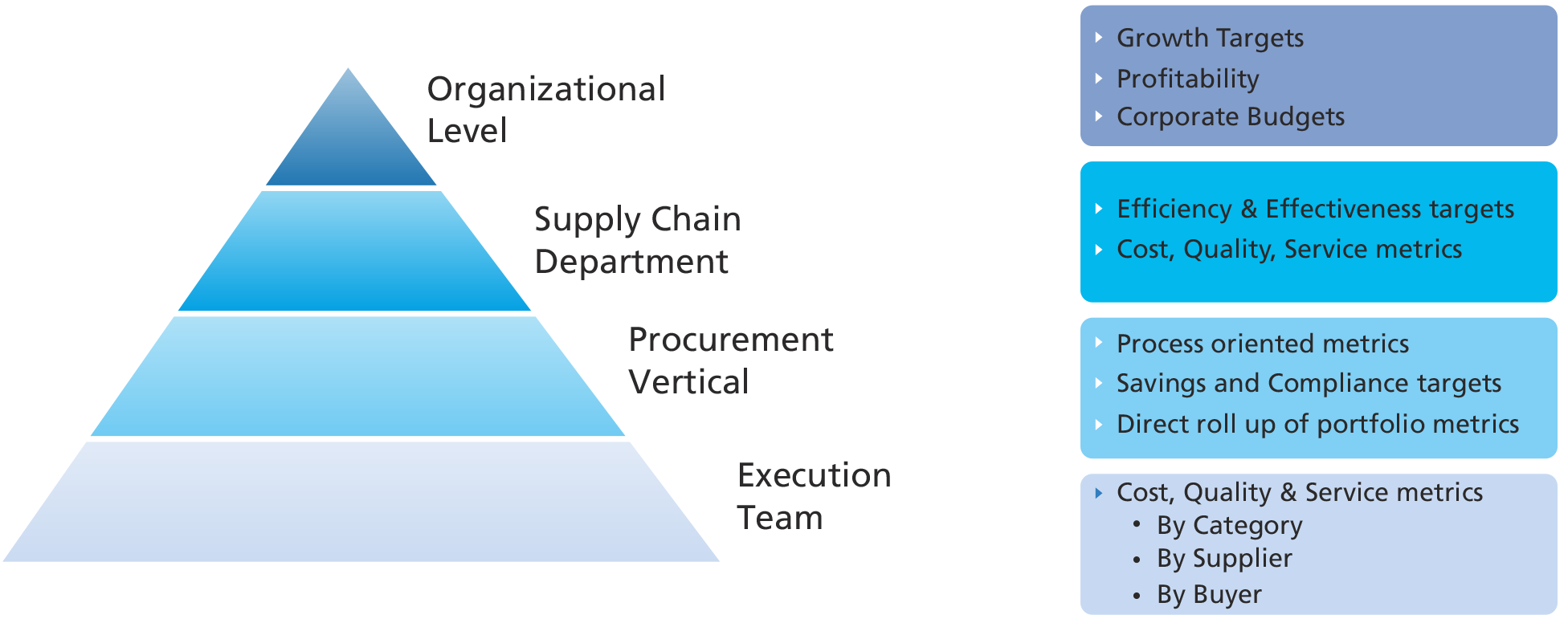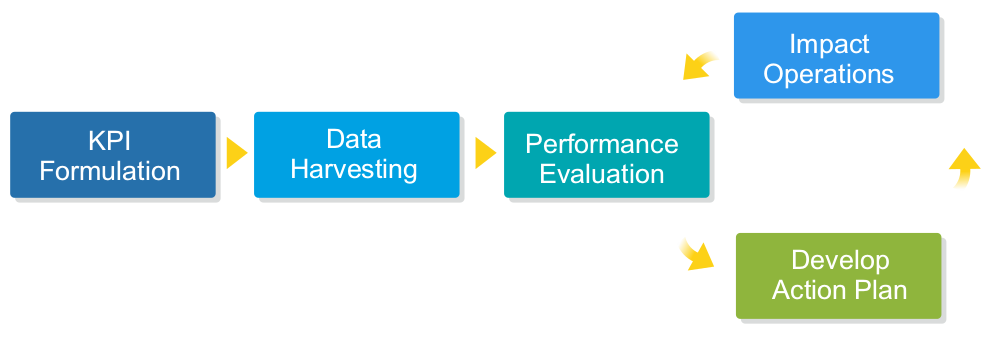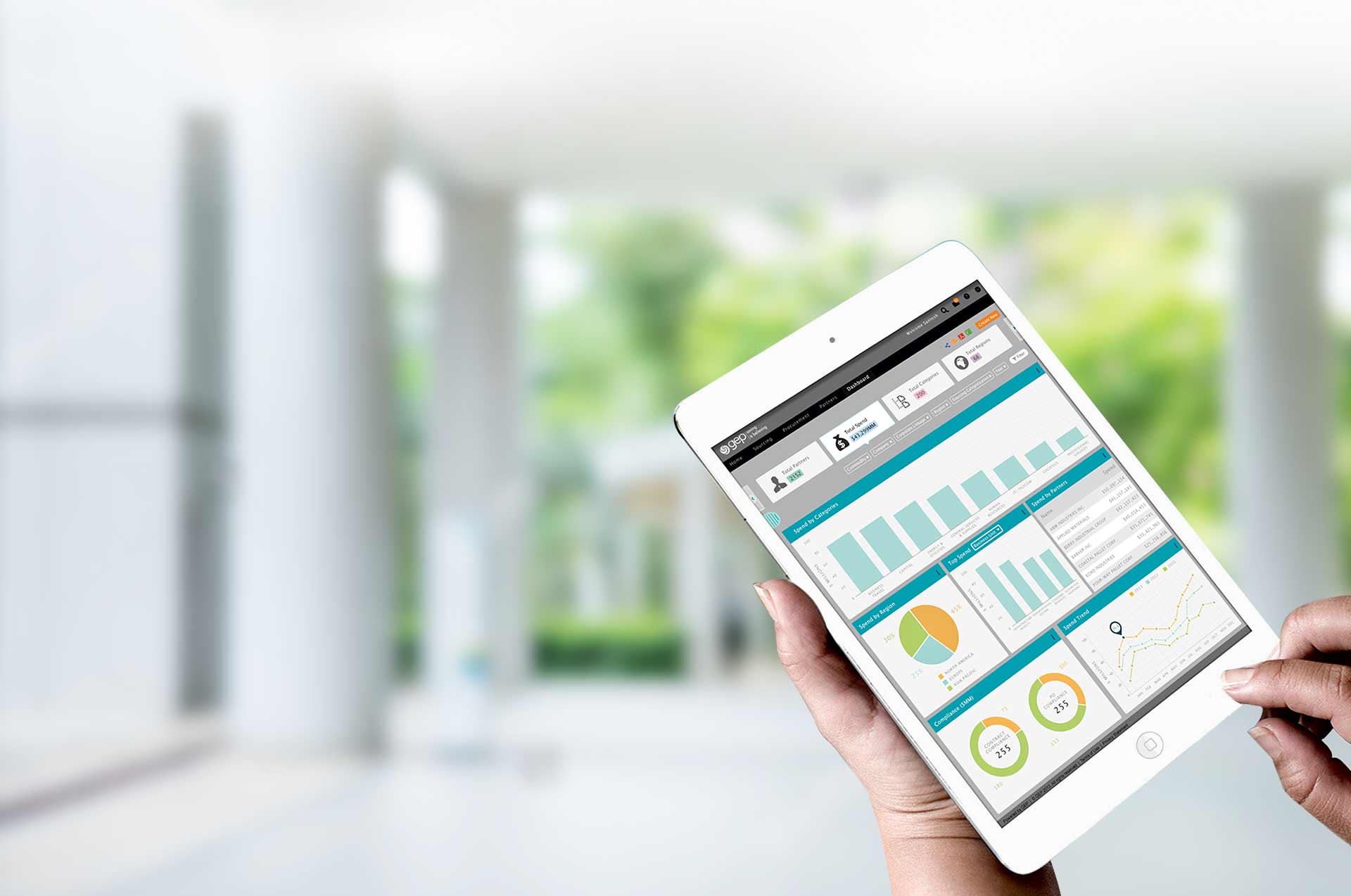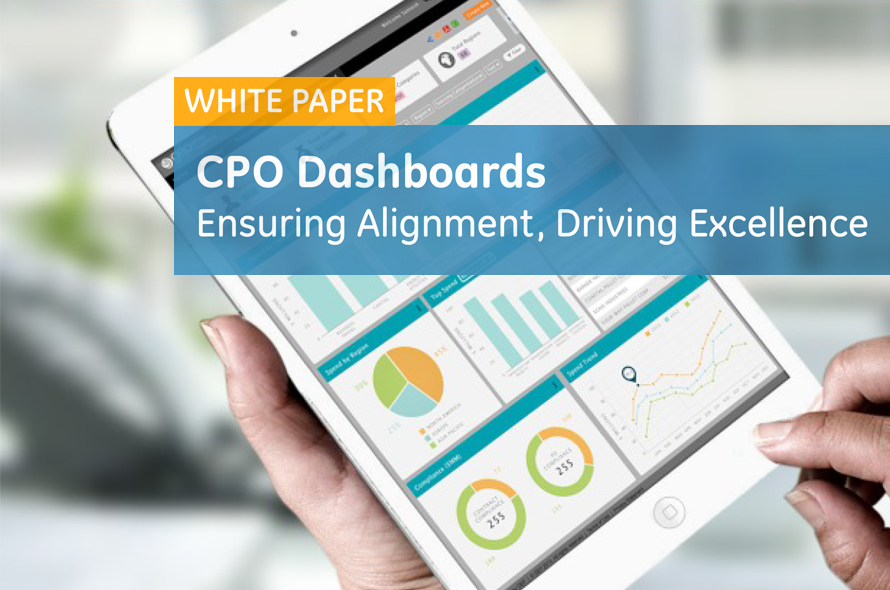Procurement leaders today are faced with new, increasingly complex challenges.
Our attenuated global supply chains are fastmoving, highly interdependent and sensitive to shock. And the number of data points in most supply chains, and hence the raw amount of information generated, has increased many fold over the last several years. That this is a good thing does not necessarily follow.
Our attenuated global supply chains are fastmoving, highly interdependent and sensitive to shock. And the number of data points in most supply chains, and hence the raw amount of information generated, has increased many fold over the last several years. That this is a good thing does not necessarily follow.
With procurement's rising profile in many leading global enterprises, chief procurement officers (CPOs) and other senior procurement leaders have more balls in the air than ever. Their expanded portfolio includes financial performance, supporting enterprise growth and expansion plans, managing attenuated supply chains and global supplier relationships, and hedging risk to name but a few.
The ability to improve performance in any one of these areas requires clear visibility into performance. This is far easier said than done – true visibility into performance requires numerous metrics and components, all of which need baselines, benchmarks and actual transactional or operational data.
A lot of this information is buried in ERP data silos or expansive reports (aka data dumps). As such, it is neither useful nor actionable. And this data-induced paralysis perpetuates reactive “firefighting” rather than proactive performance management.
Designing Effective Dashboards
Corporate goals are defined in terms of metrics such as profitability and growth. It is essential for the supply chain organization to understand how their activities translate. Further, progress toward these objectives should be made plain to the procurement organization in its metrics, from top to bottom (see below).

But which metrics? An exhaustive list of metrics, however, merely re-creates the same problem, albeit with a few more process steps in between. The key to the information ultimate utility is in the selection and prioritization of what is measured.
From both a procurement leadership and governance perspective, indicators that reflect the procurement performance are essential, yet at the same time, they also need be aligned to the enterprise's larger business strategy and the metrics used to measure it.
A good way to start developing a framework for a CPO dashboard is using an approach similar to a balanced scorecard.
Some of the key goals for a procurement organization could be financial performance, operational performance, support to business and organizational development. Each of these will further translate into specific metrics – for example, financial performance can be assessed by annual savings delivered, cost avoidance, return on procurement assets or investments and the like.
Operational performance can be evaluated against supplier performance scores, customer satisfaction, supply risks indices and operating costs.
Procurement's contribution in supporting business is further captured from metrics around innovation, supplier development, contribution to supporting new market penetration, speed to market or new product development.
Other metrics capture the procurement organization's readiness for future by measuring internal capability enhancement, employee satisfaction, motivation, culture and stakeholder perception of procurement.
It's important not to complicate your metric set, attempting to derive the overarching meta-metrics from more-or-less simple measurements of discreet activities and phenomena. Indeed, the objective of developing the detailed or second level of metrics is not to increase accuracy of the assessment but to be able to identify specific gaps in performance.
For example, realized savings delivered (on total spend or a specific category) could be a function of total spend, percentage of spend addressed, percentage savings yield and compliance to implemented contracts.
Now you could quite rightly drill down further to discover where and why compliance levels are low and take measures to improve them. You could further segment this – compliance by category, vendor, product brand, business unit and region, just for starters.
This kind of granularity is often useful in ad hoc investigation, but be very wary of permanently crashing the power and utility of the well-conceived CPO dashboard by layering on metrics without discrimination.
Closing the Gaps
A useful CPO dashboard enables drill-down on performance metrics to root causes and enables action. This, however, requires maintaining large data repositories. Huge amounts of data are generated in the form of purchasing transactions, sourcing projects, negotiated contracts, unit prices, contract terms, payment terms, commodity prices, delivery reports, customer surveys, supplier information, risk scores, internal turn-around times, and operating costs, among many others. Some enterprises procurement organizations balk at this.
And while most large companies have invested in some amount of automation in the areas of spend analysis, sourcing, contracts and operational purchasing, the data itself is generally disconnected and rarely feeds into a coherent CPO dashboard.
On the other end of the spectrum, simple, spreadsheetbased dashboards can yield some insight through manually updated charts. True data visibility can be difficult to achieve as drill-down capability is severely confined by manual and ad hoc processes, and the inherent limitation of the tools.
Investing in a technology tools specifically customized to the reporting and analysis process will close those gaps and provide far more advanced analytical capabilities.
There are reporting tools that can be linked to databases or ERP systems to extract select data, automate several types of reports and ultimately display rolled-up metrics through an integrated dashboard providing an intuitive and interactive analytical interface.
Companies investing in such a technology should also evaluate the flexibility such a solution provides to address their specific reporting needs.
Dashboard Requirements – By definition, an effective CPO dashboard….
- Consolidates, organizes and weights data streams from multiple sources
- Provides meaningful data visualization, intuitively rendered and highlighting key trends
- Delivers drill-down capabilities, providing granular views of financial and operational data
- Enables the tracking of trends across time categories
- Provides benchmarking of performance against competitors
- Feeds data directly in from enterprise resource planning systems and management reports
Conclusion
A CPO dashboard is an invaluable tool to assess the performance and competency of a procurement organization at any point of time, identify gaps and take timely actions to improve results.
In summary, an effective dashboard should support for key leadership activities:
- Strategic Performance Assessment – Ensure procurement objectives are being met by using metrics that support key goals
- Holistic Perspective – Provide a global view of procurement organization's health to identify systemic issues and shape overall strategy
- Informed Decision Making – Formulate effective action plans by tracking and analyzing rich data in real time
- Business Insight – Leverage value-added reports to track performance, share best practices and tackle problems across the procurement organization
- Swift Adoption – Simple user experience encouraging metric owner participation and facilitates scalability throughout organization
- Improve Manpower Utilization – Free up resources dedicated to report creation to focus on advanced analysis and other business endeavors
- Information Accuracy – Reduce manual input errors through direct data harvesting
Ultimately, a dashboard should help to drive change and behavior across the organization. To do so CPOs and procurement leaders need to leverage the visibility that a CPO dashboard provides to:
Develop regular review schedule.Dashboards can be easily integrated into monthly business review sessions. As the vital signs of the company are methodically evaluated, actions and results can be tracked consistently.
Set clear targets.Directing procurement to the ideal state requires small continuous steps, and setting targets would provide impetus for change. Starting from the long term and understanding what you want to achieve year on year helps to set monthly targets in context. This continues to feed in
Develop a flow of action. Outlining a clear flow of responsibility for decision-making enables change to be propagated with minimum resistance through the organization. Managers from strategic to operational level should be held accountable for the results.

Case Study
CPO Dashboard in Action – A Case Study
GEP helps enterprise procurement team at global CPG giant improve strategic alignment, data visibility and performance
Background
A leader in the packaged food business, this company has global operations spanning 20 countries serving consumer markets in over 180 countries. It places strong emphasis on building strong brands by gaining consumer trust and fostering product innovation. While our client's new products had increased overall sales growth, it faced several supply chain issues that threatened the company's profitability:
- Rising commodity costs dragged down overall margins
- A food contamination incident called into question the quality of its operations
- Further supply chain disruptions lost them critical sales revenue and market share
The client needed to find a way to maintain its market leadership while ensuring that it could deliver the quality products they promised their consumers.
Client Challenges
The firm's leadership engaged GEP to deliver a technology platform that would enable them to gain better visibility into their supply chain and procurement performance. GEP performed a rigorous analysis of the company's procurement and supply chain management practices. The team diagnosed several key issues:
- Different measurement systems across regions made it difficult to evaluate global operations
- Lack of data transparency on company's operations brought about reactive management tactics
- Low standardization and information sharing among plants resulted in duplication of activities
- Manual data collection and analysis was labor intensive and took time away from valuegenerating activities
- Different data storage systems reduced ease of access to data
Project Approach
GEP developed the CPO dashboard to deliver insights on vital aspects of the client's supply chain. These insights were to form the basis of discussion for our client's regular business review sessions, and would form the basis for further action at the operational level. Candid discussions were initiated with all relevant stakeholders to understand their strategic goals, define their ideal state and address their current pain points. The result was a platform customized to suit our client's exact needs and purposes.
Through conversations with top management and industry analysis, GEP distilled key pillars of success for our client: standards compliance, consumer satisfaction and employee engagement. A small set of key performance indicators (KPIs) were selected to capture performance on these primary issues. To ensure measurement accuracy, the GEP team worked with metric stakeholders to refine the quantitative calculations and qualitative factors behind each of the KPIs. GEP prepared training materials to educate stakeholders on the significance of each metric. The tool was piloted on a small scale and then rolled out across the supply chain division.
On the back end, the workflow was streamlined through careful planning and automated systems. The client's data streams were seamlessly integrated into the cloud from multiple sources including ERP systems, e.g. SAP and other third party vendors. A regular data input schedule was established just ahead of performance review cycles across the firm so that all information would be up to date. In order to maintain the integrity of our client's database, the information feed was consolidated by an administrator on the client side and uploaded separately.
Results
By using the GEP procurement dashboard, stakeholders throughout the organization were able to make more informed decisions. The consistent definition of metrics across global operations made it easy for them to trend data within business units across time. Management could track current performance against target goals and take the necessary action to draw operations in line. Having the ability to drill down from global to region to business unit to plant meant that management could diagnose problem areas swiftly. The dashboard quickly became an indispensable tool in driving business decision and red flags, including:
- Reducing violations of labor and operational standards, in compliance with regulations
- Ensuring customer satisfaction to build a strong brand
- Investing in human capital for continued excellence in talent
The intuitive look and feel of the dashboard contributed to rapid and sustained user adoption among our client's procurement. Graphical representations of data highlighted critical patterns and were especially useful in business review meetings with multiple stakeholders. Best of Best reports offered a granular operational view that could pinpoint the best and worst plants. Using this, our client was able to systematically promote best practices from its top plants and tackle issues pertaining to the lowest-performing plants.
The automation of processes also freed up time that would have spent on routine data collation tasks. Prior to the project implementation, executives had to compile spreadsheets from multiple sources and update trend graphs manually.
With the dashboard, they could simply print out reports or project data visualizations to spark off discussion. Since the data was fed into the system directly from the source, the opportunity for human error was dramatically reduced, ensuring accuracy of the information presented. Having the information archived in a centralized repository also eliminated time spent creating ad hoc reports and generated better information flow through the organization.
Excellence Achieved
With this CPO dashboard in place, our client achieved alignment with strategic goals at all levels in the company. Data visibility reduced the blind spots that had previously affected the company's procurement and supply chain performance.
The CPO dashboard has proven an important weapon in this company's arsenal, helping them to build stronger, better managed supply chains and, ultimately, a thriving global enterprise.

